
“So Uncultured”: Woman Shamed For Her Croissant ‘Etiquette’ Until Her French BF Intervenes
InterviewEvery country has food-related customs that locals don’t even think twice about in their day to day. But they might be less obvious to tourists visiting the country.
Redditor u/wyckedpsaul recently told the ‘Petty Revenge’ community about tourists in Paris telling her how to properly eat a croissant. Little did they know that their way of eating the pastry is wrong and that the OP’s partner is actually French. That is why, when the latter saw how she was consuming the food, he started laughing and made sure to address the tourists as well.
Bored Panda has reached out to the OP and she was kind enough to answer a few of our questions. Scroll down to find our interview with her in the text below.
There’s typically a common way to eat nearly every traditional thing there is
Image credits: mrsdeetz (not the actual photo)
This person was eating a croissant in Paris when a family of tourists told her she was doing it wrong
Image credits: kegfire (not the actual photo)
Image credits: wyckedpsaul
The OP revealed that the petty revenge was evoked by the way the tourist spoke to her
“In my travels, I see tourists eat dishes in… interesting ways, and I just don’t say anything,” the OP told Bored Panda. “It’s none of my business what they do and it’s none of theirs what I do. I’ve done some embarrassing things myself because of being in an unfamiliar, new place, and I’ve appreciated locals or other tourists telling me in a kind and supportive way the right way to do things. I think a huge part of it is in how you say it. Maybe if the mom had said and worded it in a nicer way, there wouldn’t have been a need for petty revenge.”
However, since the tourist didn’t, petty revenge is exactly what she got. “I was most surprised by the mom’s audacity to correct and give unsolicited advice to a stranger, in a country which they are not a native of. What made it hilarious is that the advice was totally wrong, and that she was so confident and condescending towards me. The ‘oh hon’ part really got me, which made my pettiness come out.”
The redditor revealed that her partner often suggests she has a “I’m lost” kind of look about her, which, in her opinion, might embolden other people to explain or insist things they think she doesn’t know. “I lived in Japan for a while and I’ve encountered tourists arguing with me on which bus to get to Fuji-san, all because they read about it somewhere online, but I actually lived (at that time) in the country and have been to Yamanashi countless times,” she said, providing an example. “Or when some foreigners insist that the best way to eat lechon is with ketchup and I’m doing it wrong. But my hometown is actually the lechon capital of the world,” she added.
The moon-shaped flaky French breakfast food likely originated in Austria
Food-related customs often concern not only the meals but the way they’re prepared or even consumed as well. That’s why cooking pasta in unsalted water would probably make an Italian’s blood boil faster than the water itself, eating sushi with a fork would send a Japanese person into shock, and asking for additional salt and pepper in Portugal would likely result in a hyperventilating professional chef. Similarly, seeing his girlfriend eat a croissant with a knife and a fork made the OP’s partner burst into laughter as no French person would ever think of doing so.
The soft and flaky pastry is often one of the very first things that pops into one’s mind when thinking about French delicacies. However, it is believed to have originated in Austria, home to the kipferl, which some consider to be the forefather of the French croissant. The layered goodness as we know it now is reportedly attributed to Sylvain Claudius Goy, a French chef who decided to use a laminated yeast dough instead of a brioche dough, resulting in the crunch loved by many in France and elsewhere.
Cutting through the frail golden layers of the cooked laminated yeast dough with a knife sounds like a crime; might as well butcher the rest of the typically carb-heavy breakfast. Off Beat France emphasized that breakfast is considered the least important meal of the day, which, unlike in many other places around the world, consists mainly of sweet flavors. The crescent moon-shaped staple of a French breakfast—mostly enjoyed on weekends, though—is typically accompanied by jams, other pastries, some juice, and, of course, a coffee (or some other hot drink).
Image credits: mrsdeetz (not the actual photo)
Something as mundane as eating bread can have different rules in different countries
Culture Trip pointed out that food etiquette in France requires you to use a fork and a knife for everything, except bread, asparagus spears, and sandwiches. Considering that a croissant could be put in the same category as bread in this case, it should be eaten using one’s hands. Culture Trip suggested that if offered bread, a person should break a piece of it off and keep it on the left-hand side of their plate. Using utensils or biting directly into it might attract some weird looks, as breaking it into bite-sized pieces before popping them into one’s mouth is the way to go. (You can also use it to mop up the food on your plate, which is not only completely acceptable, but could be considered a sign of acceptance of the food.)
Swiping the plate clean with bread can sometimes be acceptable in Italy, too. However, the use of this spongy source of carbs depends on the situation. Food writer Elizabeth Minchilli emphasized that bread is meant to be eaten with other food. However, where there’s a rule, there’s an exception: it can be eaten on its own if it’s served as a bruschetta or a focaccia, and shouldn’t be consumed alongside pasta dishes, even though that contradicts the bread-with-food-only rule. But even the exception has an exception in this case, coming back to mopping plates clean—you can use pieces of bread to soak up the leftover pasta sauce.
Another rule when it comes to carb consumption in Italy regards one of the most iconic wonders of local cuisine; you guessed it right—pizza. According to Tuscan Traveler—and likely quite a few Italians out there—pizza is generally only consumed in the evening. With a few exceptions of grabbing a slice during the day as street food, pizza would typically only be eaten during dinner. But Italians have unwritten rules when it comes to breakfast as well; for example, that that’s the only time when it’s okay to order a cappuccino. This matter would likely turn into a heated debate if a tourist in Italy would try to convince someone otherwise.
These are just a couple of examples of how food customs and certain rules regarding it differ with each country. But one thing is clear, it’s important to know them well before teaching others about them—many people in the comments pointed out that they would never consider following the tourist’s advice to cut the croissant using utensils.
“I’ve had my fair share of situations like this,” the OP told Bored Panda. “In this instance, I decided not to tell her off and instead waited for my partner because by apologizing, I’ve given them a false sense of victory—they were right, their attitude was warranted. She wasn’t expecting that and she seemed very happy with herself. Isn’t (petty) revenge sweeter when someone is being brought down from a very recent high? And what better way to serve that revenge than by having a French explain about a French pastry, in his native country, France?”
Image credits: Nadin Sh (not the actual photo)
People shared opinions and similar stories in the comments, the OP replied to some of them
Can´t we all just agree to keep our noses in our own business and leave other people alone? Let people eat their croissant with knife and fork. Let them dump pineapple on pizza. Let them eat fries with mayo. They hurt nobody doing this stuff.
I will still judge my friends for it, but I’d never go and tell strangers something like that, even if I think it’s weird
Load More Replies...I don't think it had anything to do with where they were from. Those tourists were just very weird individuals. I've lived in 14 states in the U.S., and have never seen anyone eat a croissant, or any other pastry, with a fork.
I'll eat really sticky pastries with a fork
Load More Replies...Can´t we all just agree to keep our noses in our own business and leave other people alone? Let people eat their croissant with knife and fork. Let them dump pineapple on pizza. Let them eat fries with mayo. They hurt nobody doing this stuff.
I will still judge my friends for it, but I’d never go and tell strangers something like that, even if I think it’s weird
Load More Replies...I don't think it had anything to do with where they were from. Those tourists were just very weird individuals. I've lived in 14 states in the U.S., and have never seen anyone eat a croissant, or any other pastry, with a fork.
I'll eat really sticky pastries with a fork
Load More Replies...
 Dark Mode
Dark Mode 

 No fees, cancel anytime
No fees, cancel anytime 






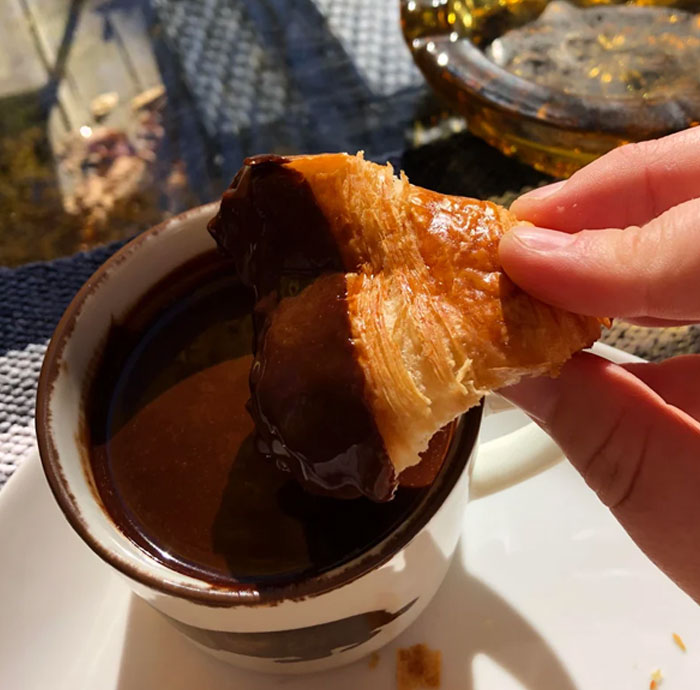
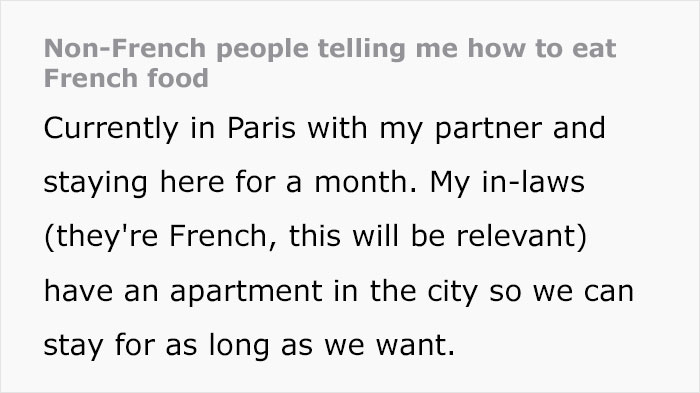
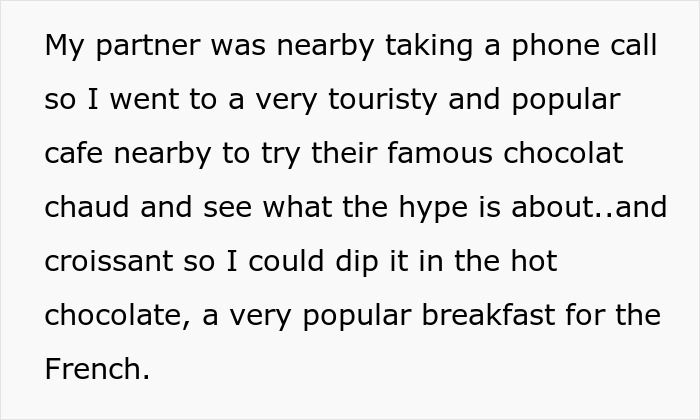
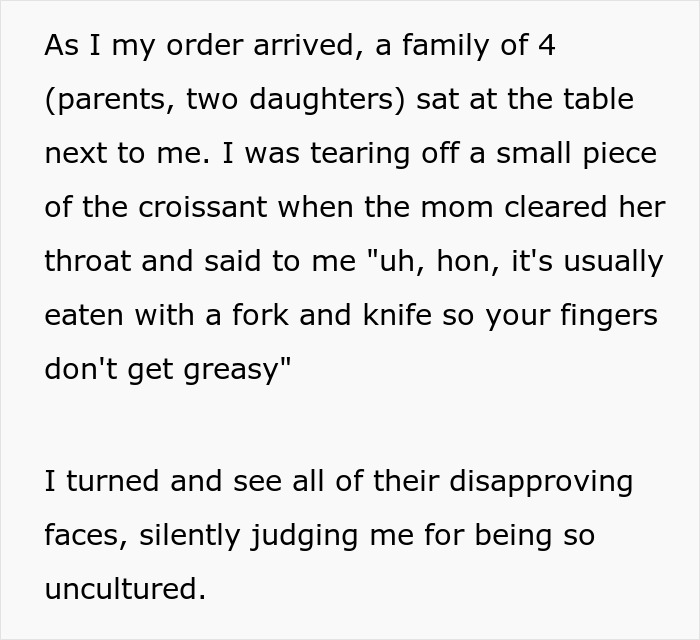
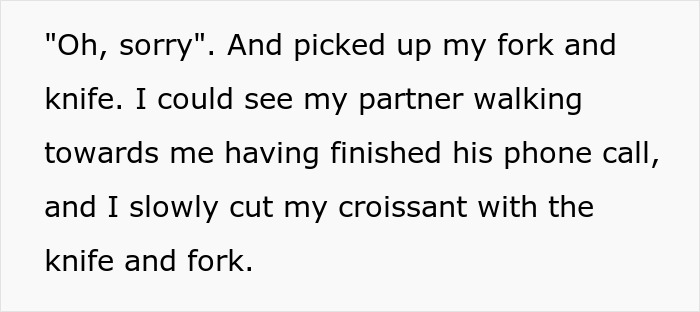
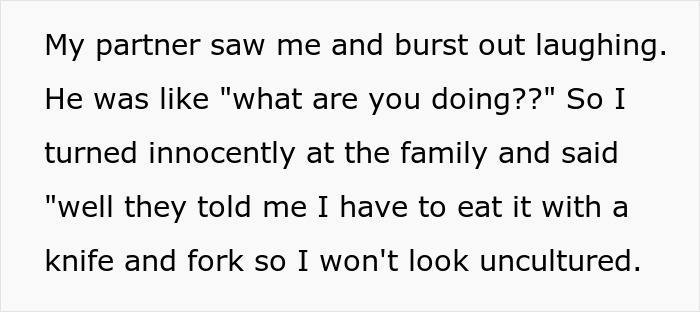

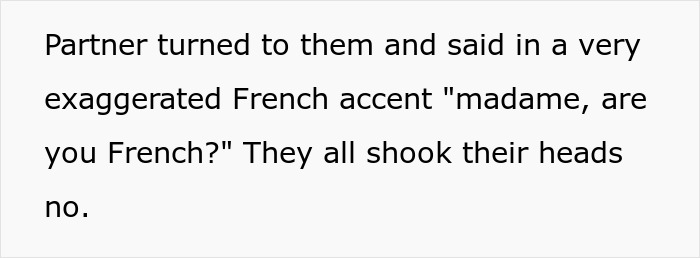
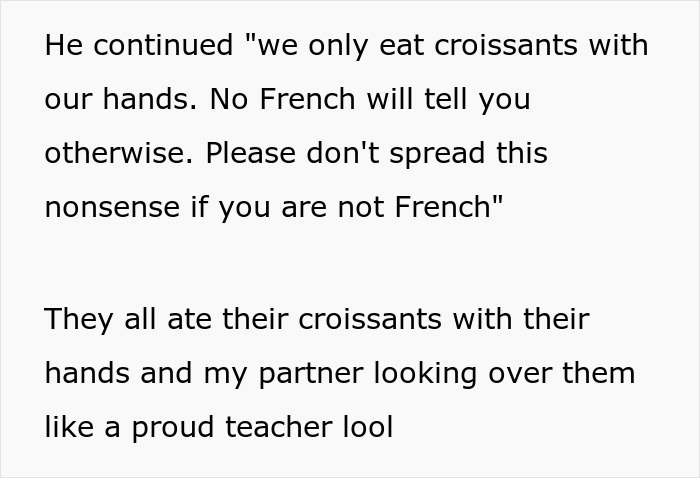
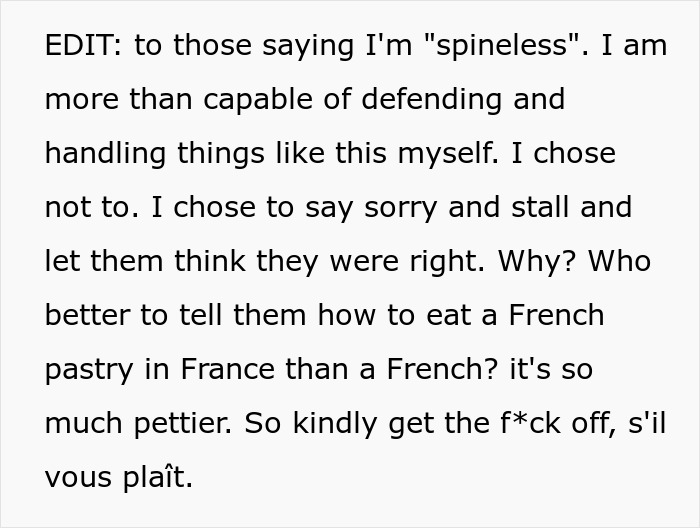
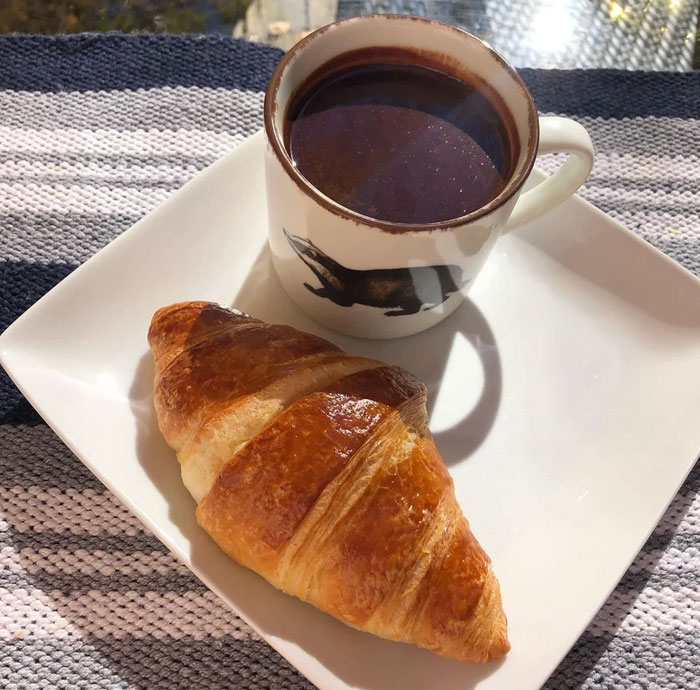
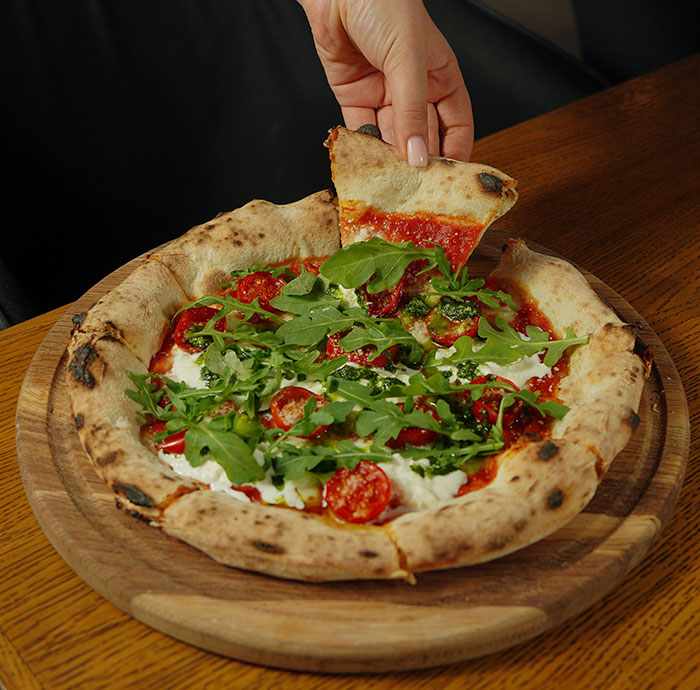
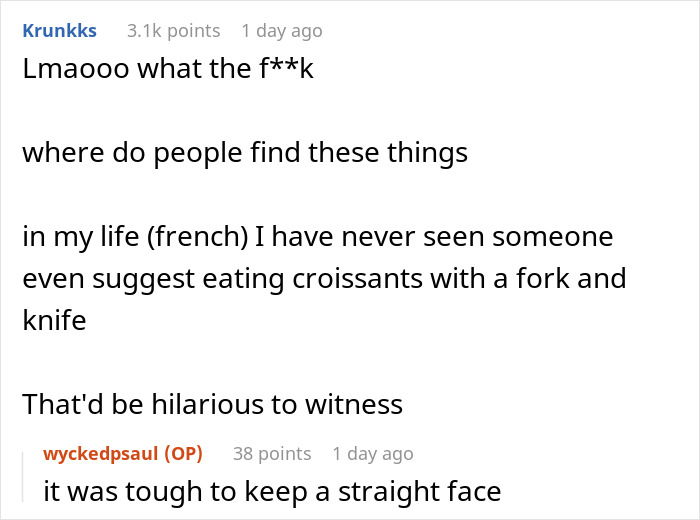
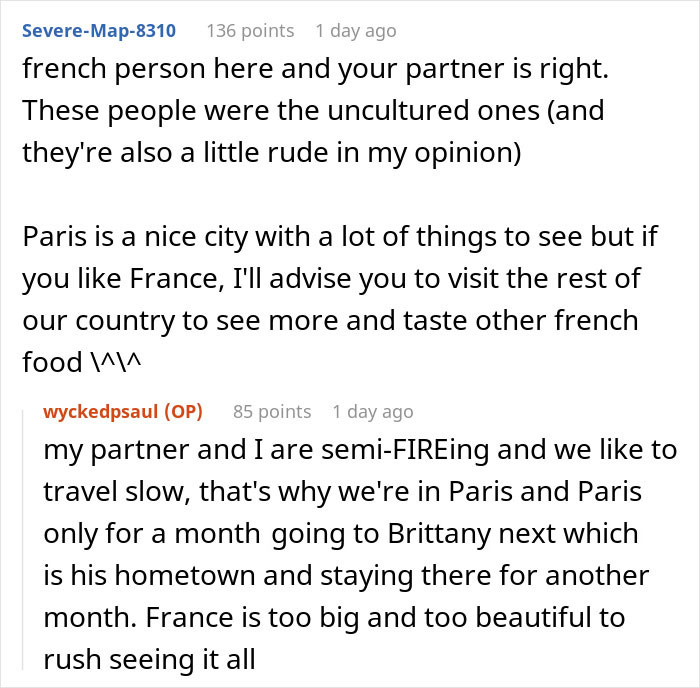
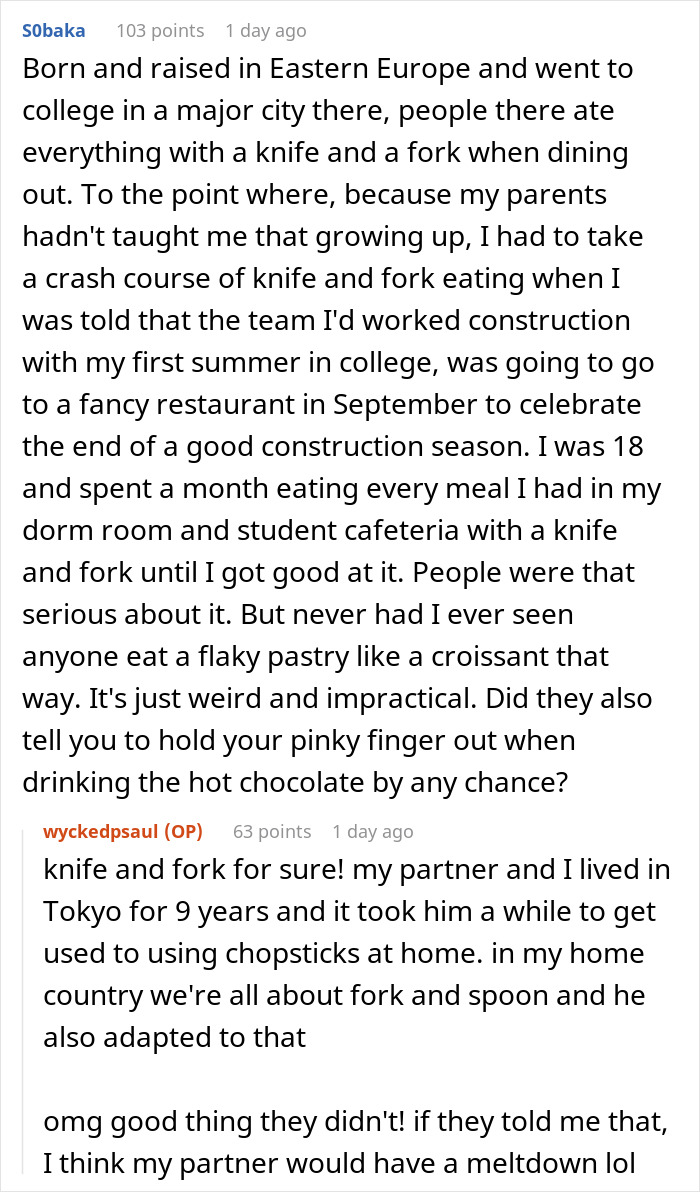
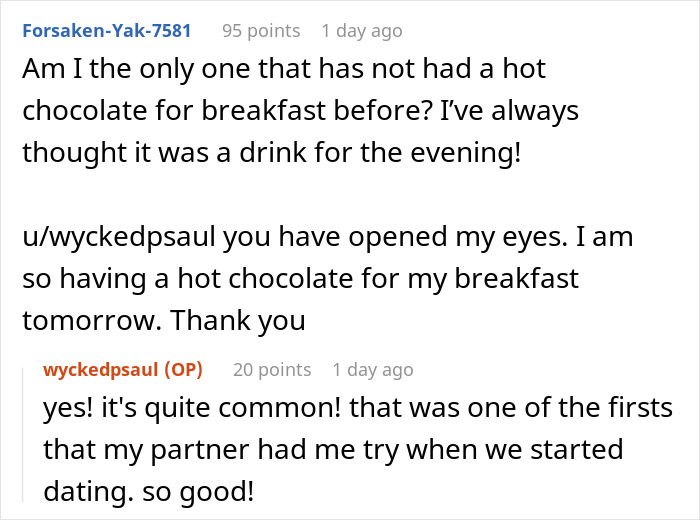
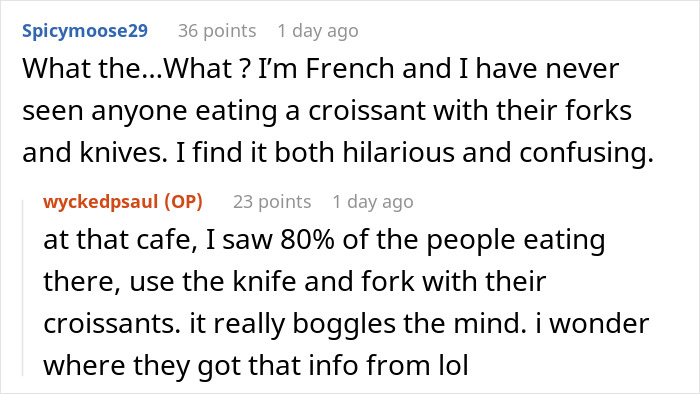
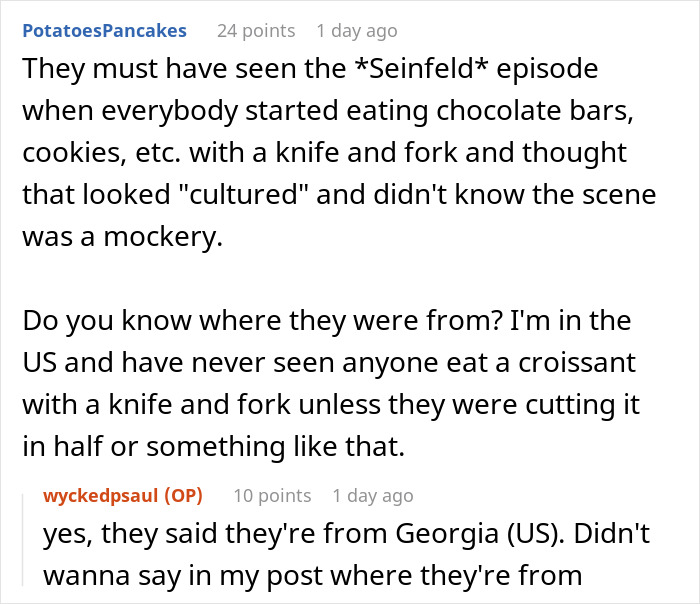

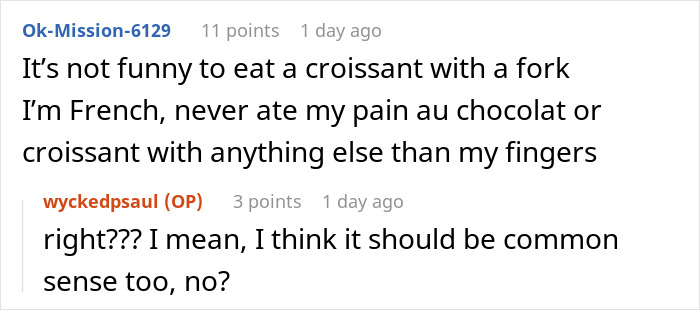
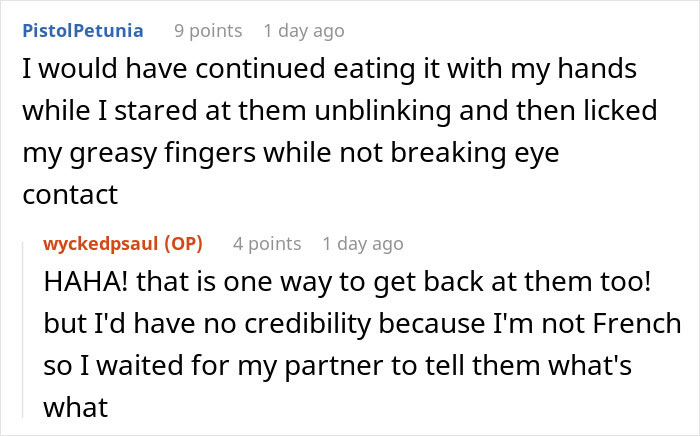
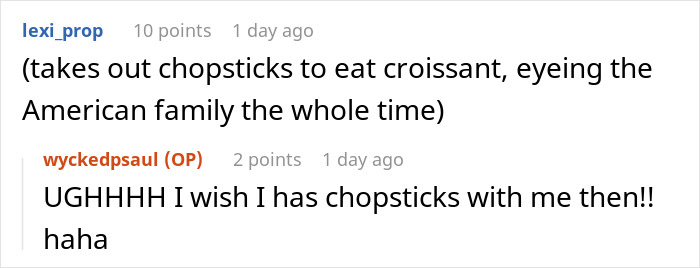
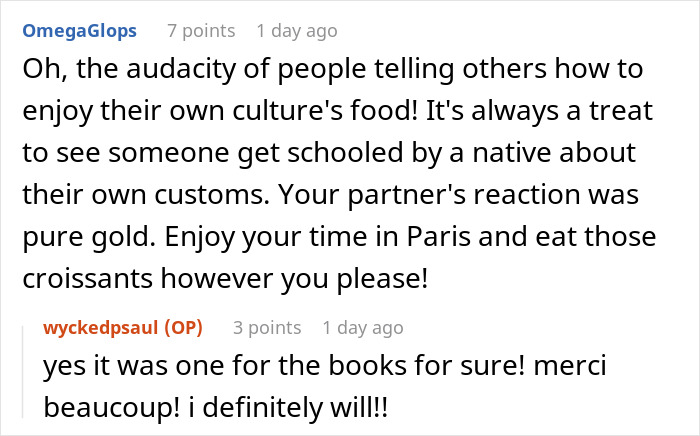
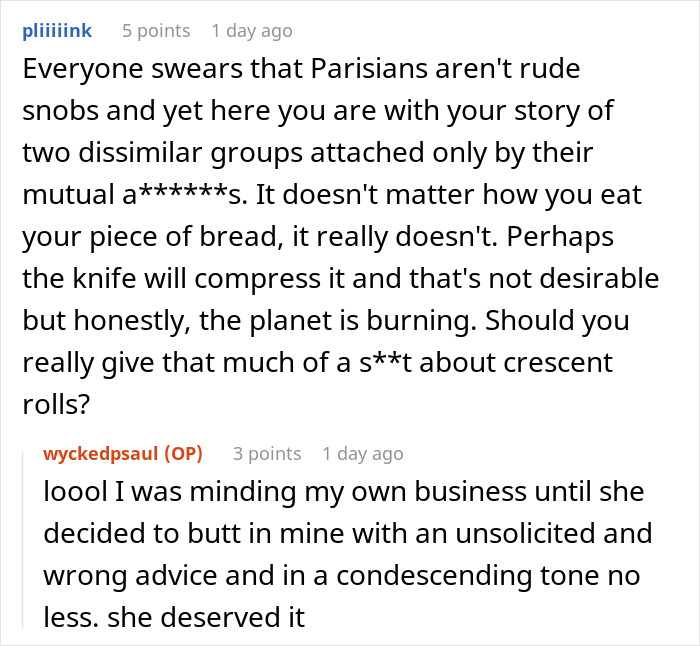
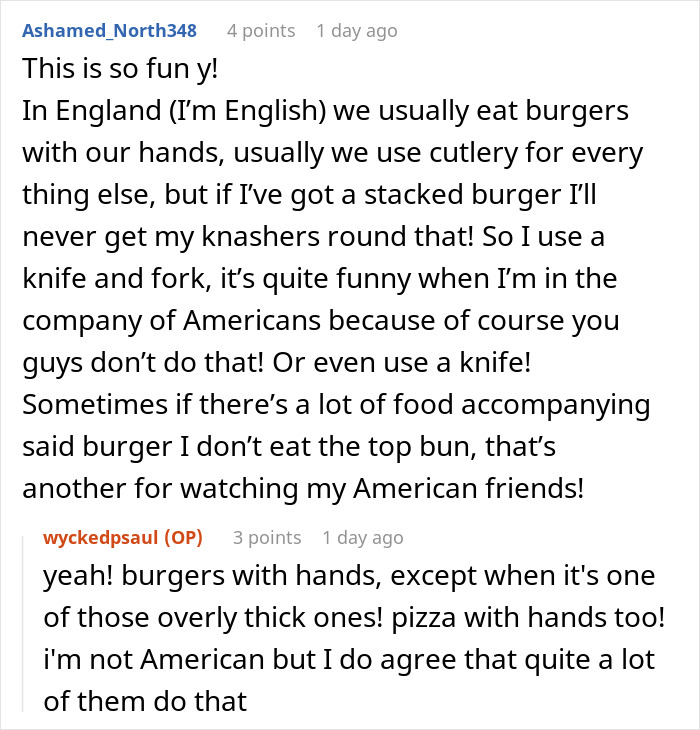




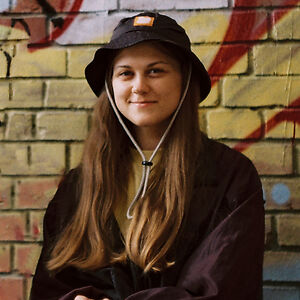











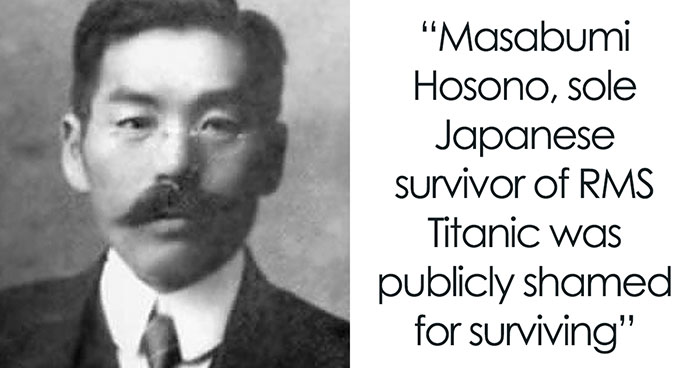






























44
53